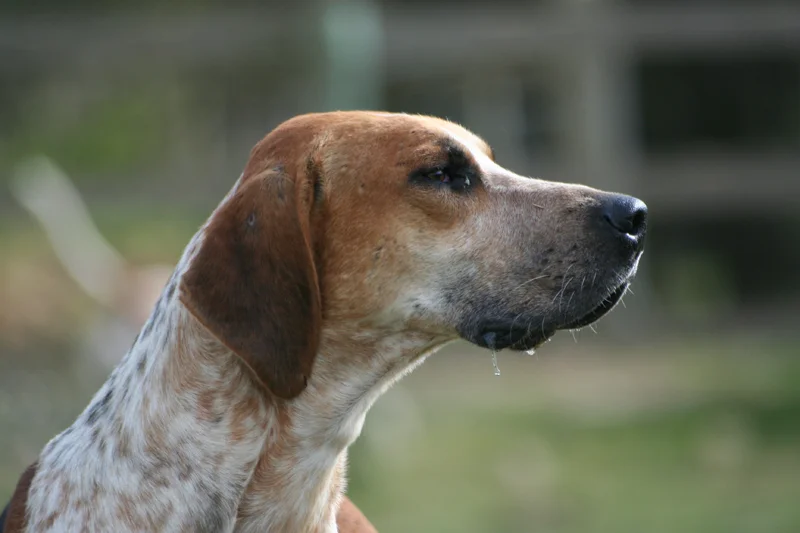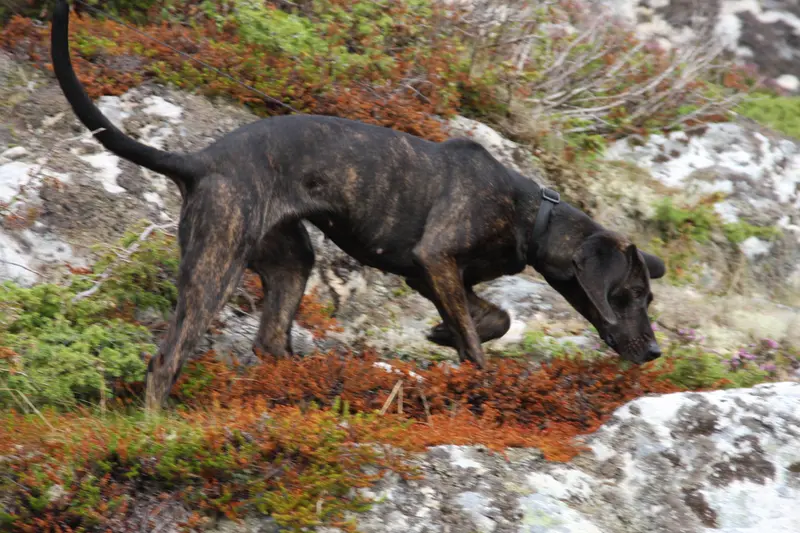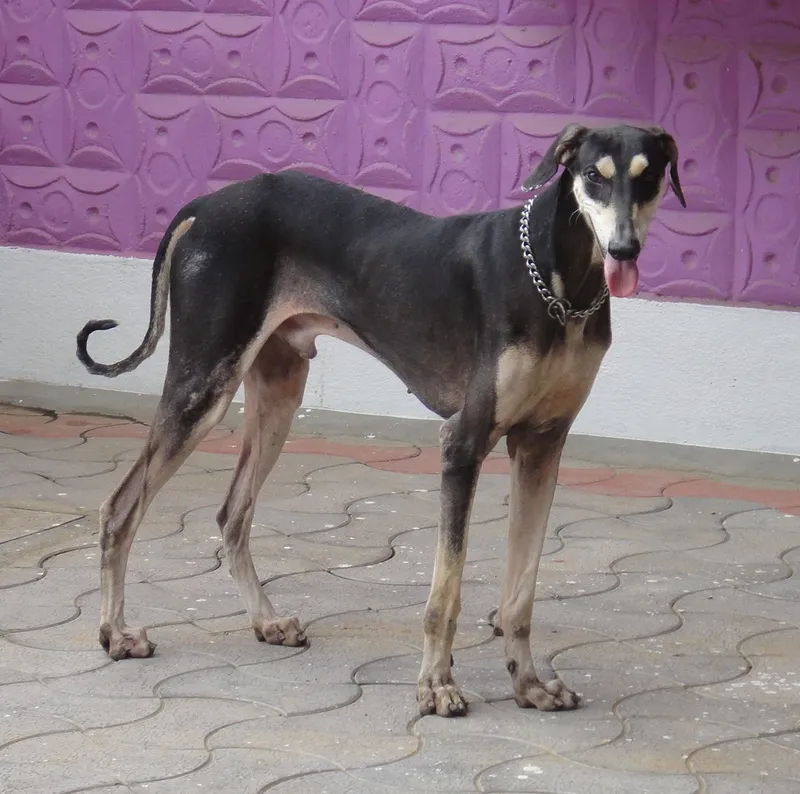Harrier
The Harrier is a medium-sized hound known for its friendly nature and strong hunting instincts. With a history as a trailing dog, it excels in active environments and is great with children.
⚡At a glance
🏆Best traits
Overview
🐕Breed Overview
✨Key Traits
💡What Makes Harrier Special
Harriers are characterized by their strong scenting ability and endurance, making them exceptional hunting dogs. They are intelligent and independent, which can sometimes lead to challenges in training.
However, with the right motivation and consistent training, they can learn commands and tasks effectively. Their friendly nature makes them great companions for families, and they are particularly good with children.
Harriers are also known for their playful demeanor and love for outdoor activities, requiring owners to provide ample exercise and mental stimulation. Their sociable nature means they do best in homes where they are not left alone for long periods, as they thrive on companionship and interaction.
The Harrier is a medium-sized hound breed that has captured the hearts of dog lovers and hunters alike. With its origins dating back to the Middle Ages in England, the Harrier was specifically bred for trailing hares in packs, making it an exceptional hunting companion. Resembling a smaller version of the English Foxhound, the Harrier stands between 19 to 21 inches tall and weighs between 45 to 65 pounds.
Its short, dense coat comes in various color patterns, and its friendly demeanor makes it an excellent family pet. Harriers are known for their cheerful and tolerant nature, especially around children, and they thrive in social environments with both humans and other dogs. However, their strong hunting instincts mean they require regular exercise and mental stimulation to prevent boredom and destructive behavior.
Daily walks, runs, and playtime in a secure area are essential to keep this energetic breed happy. Despite their independent streak, Harriers are intelligent and can be trained with patience and positive reinforcement. With a lifespan of 12 to 15 years, the Harrier is a healthy breed, though potential owners should be aware of common health issues like hip dysplasia.
Overall, the Harrier is a delightful blend of companionship and hunting prowess, making it a wonderful addition to active families or individuals who appreciate a dog with a strong work ethic and a loving disposition.
🎉Fun Facts
Harriers are known for their distinctive baying, which can be quite melodious.
Harriers have been used in hunting since colonial times in America.
They are often described humorously as 'a beagle on steroids' due to their size and energy.
They are one of the most popular hound breeds in Ireland, with numerous packs dedicated to their use.
Breed Characteristics
Family & Friends
Good Behavior
Get Up & Go
Household Harmony
Temperament & Personality
✨Key Traits
🐕Core Temperament
The Harrier is a friendly and sociable breed, known for its cheerful and tolerant temperament. They are generally good with children and other dogs, making them excellent family pets.
However, they can be somewhat reserved with strangers. Their strong hunting instincts mean they have a natural desire to explore and follow scents, which can lead to wandering if not properly supervised.
Harriers are independent thinkers, which can make training a challenge, but they are also intelligent and can learn effectively with positive reinforcement. Overall, their temperament is characterized by a balance of playfulness, affection, and a strong desire to work.
💫Personality Profile
The Harrier is an outgoing and friendly breed, known for its cheerful disposition. They are typically good with children and enjoy being part of a family. Harriers are social dogs that thrive in the company of other dogs and people, making them excellent companions.
They are playful and energetic, requiring regular exercise to keep them happy and healthy. While they can be reserved with strangers, they are generally tolerant and friendly. Their strong hunting instincts mean they love to explore and follow scents, so they should always be kept on a leash or in a secure area when outdoors.
Harriers can be quite vocal, often expressing themselves through baying, especially when excited or bored.
🔊Vocal Tendencies
Harriers are known for their vocalizations, particularly their baying, which can be quite melodic. They tend to bark when excited, during play, or when they want attention.
While they are generally not excessive barkers, they may become more vocal if they are bored or left alone for extended periods. Their vocalizations can serve as alerts to their owners, especially when they sense something unusual in their environment.
Overall, while they can be noisy, their vocal nature is part of their charm and reflects their hunting heritage.
Affection & Social Traits
Warm and balanced socially — here’s how it shows up day to day.
Energy & Activity
Moderate, steady energy — great for matching your routine.
Communication Style
Moderately talkative — a quick read on noise at home.
Care Requirements
🏃♂️Exercise Requirements
Daily Exercise
The Harrier is an active breed that requires significant daily exercise to maintain its physical and mental well-being. Ideally, Harriers should engage in at least 60 to 90 minutes of vigorous exercise each day. This can include long walks, runs, or playtime in a securely fenced area where they can explore and sniff around.
Activities like fetch, agility training, or even participating in dog sports can also help satisfy their high energy levels. Puppies may require shorter, more frequent exercise sessions to accommodate their developing bodies, while senior Harriers may benefit from moderate exercise to keep them healthy without overexertion. Regular exercise is crucial for preventing behavioral issues such as hyperactivity or destructive tendencies, as a bored Harrier can become quite mischievous.
Overall, consistent physical activity not only helps manage their weight but also promotes cardiovascular health and enhances their overall happiness.
Preferred Activities
🏠Living & Adaptability
Space Requirements
Harriers thrive in environments that provide ample space for exercise and exploration. Ideally, they should have access to a large, securely fenced yard where they can run and play.
While they can adapt to living in apartments or smaller homes, it is essential that their exercise needs are met through regular outdoor activities. Owners in urban settings should ensure that they can provide enough daily exercise and mental stimulation, as Harriers can become restless in confined spaces.
The breed's strong hunting instincts mean they should always be kept on a leash or in a secure area to prevent them from wandering off in pursuit of a scent. In summary, while Harriers can adapt to various living situations, they require a commitment to providing sufficient exercise and mental engagement.
Climate Preference
🍲Feeding Guide
Schedule
Food Types
Portion Size
Special Nutritional Needs
Harriers do not have any specific dietary restrictions, but it is essential to provide a balanced diet rich in protein to support their active lifestyle. Regularly monitor their weight and adjust food portions accordingly to prevent obesity, which can lead to health issues. Additionally, consider incorporating joint supplements if the dog is prone to hip dysplasia.
✨Grooming Requirements
Grooming Overview
The Harrier's coat is short, dense, and hard, requiring minimal grooming to maintain its health and appearance. Occasional brushing is sufficient to remove dead hair and keep the coat looking its best.
During shedding seasons, more frequent brushing may be needed to manage loose fur. Bathing should be done as necessary, typically every few months or when the dog gets particularly dirty.
Regular checks of the ears, nails, and teeth are also important to ensure overall hygiene and health. Harriers do not require professional grooming, making them a low-maintenance breed in terms of coat care.
Care Schedule
Brush weekly; bathe as needed, typically every few months; trim nails every 2-4 weeks.
Health Profile
⚕️Health Care
Regular health care is essential for maintaining the Harrier's lifespan. Routine veterinary check-ups, vaccinations, and preventive treatments can help catch potential health issues early.
Owners should also be proactive about dental care, as dental health can significantly impact overall health. Maintaining a balanced diet and ensuring regular exercise are crucial components of a health care routine that supports longevity.
Health Issues Overview
⏳Average Lifespan
Genetic Factors
Genetics play a significant role in the Harrier's lifespan, with hereditary health issues such as hip dysplasia being common in the breed. Responsible breeding practices that prioritize genetic diversity can help reduce the prevalence of these issues. Potential owners should seek reputable breeders who conduct health testing on their breeding stock to ensure the best possible genetic outcomes for their puppies.
Living Conditions
The Harrier's lifespan can be influenced by various environmental factors, including housing conditions, climate, and social interactions. Providing a safe, secure, and stimulating environment is crucial for their well-being.
Harriers thrive in homes with access to outdoor space for exercise and play. A climate that is not too extreme, whether hot or cold, is ideal for their comfort.
Regular social interactions with humans and other dogs can also positively impact their mental health and longevity. Ensuring that they are not left alone for long periods can help prevent anxiety and related health issues.
🏥Common Health Issues
Hip Dysplasia
Warning Signs
🔬Diagnosis
Veterinarians typically diagnose hip dysplasia through physical examinations and X-rays.
💊Treatment
Treatment options may include weight management, physical therapy, and in severe cases, surgery.
📝Management Tips
Maintain a healthy weight through diet and exercise, and consider joint supplements to support hip health.
🛡️Preventive Care
🔬Hip Evaluation
Hip Evaluation: This test assesses the hip joints for signs of dysplasia, which is common in the breed.
📅 Recommended annually for adults; more frequently for breeding dogs.
🔬Eye Examination
Eye Examination: This test checks for hereditary eye conditions that may affect the breed.
📅 Recommended annually, especially for breeding dogs.
Training
🧠Intelligence & Trainability
💪Work Drive
Harriers have a strong work drive, stemming from their history as hunting dogs. They thrive when given tasks that engage their natural instincts, such as tracking and trailing.
Activities that challenge their minds and bodies, like scent work or agility training, are excellent for keeping them mentally stimulated. Without sufficient mental and physical engagement, Harriers can become bored and may exhibit destructive behaviors.
Providing them with opportunities to use their noses and explore their environment is essential for their overall well-being.
⚠️Training Considerations
Harriers can present some training challenges due to their independent nature and strong hunting instincts. They may become easily distracted by scents and sounds, making it essential for owners to establish consistent training routines.
One common challenge is their tendency to wander off if they catch an interesting scent, so training them to come when called is crucial. To overcome these challenges, positive reinforcement techniques, such as using treats and praise, can be effective.
Additionally, early socialization is important to help them become well-adjusted adults. Engaging them in activities that stimulate their minds, such as puzzle toys or scent games, can also help mitigate boredom and reduce undesirable behaviors.
📝Training Tips
Training a Harrier requires patience and consistency. Start with basic obedience commands, using positive reinforcement methods to encourage good behavior.
Keep training sessions short and engaging, as Harriers can become bored quickly. Incorporating fun activities, such as agility training or scent work, can help maintain their interest.
Socializing them with other dogs and people from a young age is essential to ensure they develop into well-rounded adults. It's important to remember that Harriers may not be as eager to please as some other breeds, so finding the right motivation, whether it's treats or playtime, is key to successful training.
History & Heritage
📜Origin Story
The Harrier's history dates back to the Middle Ages in England, where it was developed as a hunting dog specifically for trailing hares. The breed's name is derived from the Norman word for 'hound,' indicating its long-standing association with hunting.
The first known pack of Harriers was established by Sir Elias de Midhope in 1260, and these dogs were prized for their ability to work in packs, allowing hunters to pursue game on foot. Over the centuries, the Harrier has been bred for its stamina, strength, and keen sense of smell, making it a versatile hunting companion.
The breed's popularity spread throughout England and into Wales, where it became a staple in hunting circles. Today, Harriers continue to be used for hunting in Ireland, where they are highly regarded for their skills in tracking both hares and foxes.
⏳Development History
The Harrier's origins are somewhat murky, with various theories regarding its development. Some sources suggest that the breed was created by crossing Bloodhounds, Talbot Hounds, and Basset Hounds, while others propose that it is a smaller version of the English Foxhound.
The first recorded pack of Harriers was established by Sir Elias de Midhope in 1260, and the breed quickly gained popularity for its ability to hunt hares in packs. Over time, Harriers have been bred for their endurance and scenting abilities, making them excellent companions for hunters on foot.
Despite their historical significance, the breed is still not officially recognized in England, although it remains a beloved hunting dog in Ireland and has gained recognition in the United States since the late 19th century.
🛡️Purpose & Historical Role
Historically, the Harrier was bred for hunting hares in packs, making it an essential companion for hunters who preferred to pursue game on foot. The breed's ability to scent and track hares has made it a valuable asset in hunting communities, particularly in England and Ireland.
Harriers have also been used in fox hunting, showcasing their versatility as hunting dogs. In modern times, while they are still utilized for hunting, Harriers have also found roles as family companions and competitors in various dog sports, including tracking and agility.
🏺Cultural Significance
The Harrier has a rich history as a hunting dog in England, where it has been used for centuries to hunt hares and foxes. Its development can be traced back to the Middle Ages, making it one of the older scenthound breeds still in existence.
The breed's name, derived from the Norman word for 'hound,' reflects its specialized role in hunting. Harriers are known for their sociable nature and have been a popular choice among hunters who prefer to pursue game on foot.
This breed has also made appearances in popular culture, often depicted as friendly and loyal companions. In Ireland, the Harrier is particularly valued, with numerous packs dedicated to hunting, showcasing its importance in the hunting community.
Conservation Status
The breed exists today and isn’t classified as extinct.
Less widespread; more likely to be region-specific or niche.
This breed is less common but has stable populations in certain regions.









